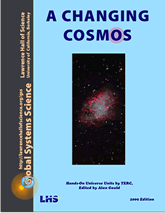AC5C. Stay Current—Color, Temperature & Age of Stars

Staying current for Chapter 5
Articles from 2011–present
2011-05-25. NASA’s Kepler Yields the Next Harvest: A bounty of findings delivered at the 218th Meeting of the AAS in Boston. Kepler News. Excerpt: Soeren Meibom, Harvard Smithsonian Center for Astrophysics, is studying the stars… in the Kepler field of view. There is a bounty of data pouring down from Kepler, providing exquisitely precise measurements of star systems. …Meibom pointed out that if we are seeking evidence of habitable planets — suitable places for life — we have to understand the age of the planetary systems to get a sense about whether life has had enough time to evolve. The parent star and its planet share the same birthday, but Meibom explained, “Stars — and planets — don’t have birth certificates. They look much the same for almost all of their lives.” He’s conducting a study of the stellar clusters in the Kepler field to develop a better method of determining the age of stars. Stars are spotted, and their spin rates reflect their age: young stars spin rapidly, and older stars — like the Sun — spin more slowly. The spin rate of a star can be calculated from the Kepler data, but before this spin rate can be correlated with a good estimate of the star’s age, studies must be done on stars with ages that are known from previous studies. That’s why Meibom’s observations of star clusters with known ages are important. They are helping to establish a firm connection between a star’s spin rate and age, creating a sort of clock for determining the age of stars — and their planets. Meibom presented his first analysis in “The Kepler Cluster Study: NGS 6811”.
[http://arxiv.org/abs/1104.2912]
See also separate press release.

